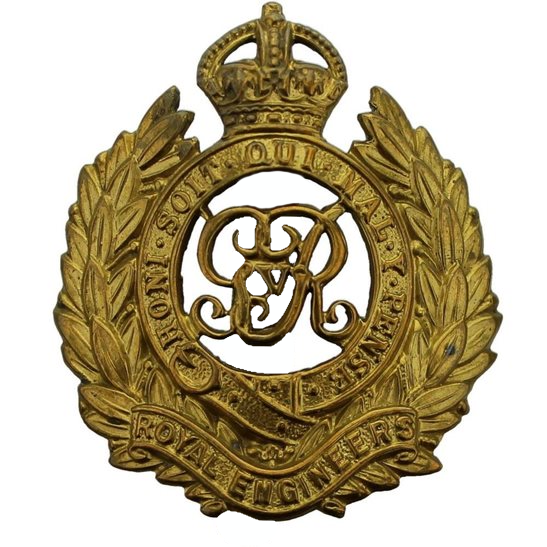Personal Details
Born: 22 February 1895 in Whitchurch, Shropshire and baptised on 20 March the same year in St. Alkmund’s Parish Church, Whitchurch.
Family: He was the eldest of four children born to Edward Vickers, a blacksmith, and his wife Ellen. He married Dorothy E Cliff in Whitchurch in 1922 and together they had nine children – Charles B, George E, Geoffrey R, Frederick R, Norman W, Audrey, Clifford R, Margaret M and Andelle.
Residence: At the time of his baptism the family were living in Green End, Whitchurch; by 1901 they had moved to 4 Station Road, Whitchurch. In 1911 he was living at 34 Worthington Street, Whitchurch; he was discharged from the military in 1919 to 5 Station Road, Whitchurch (this is the address on the 1919 Absent Voters’ Register). In 1939 he was living with his wife and children at 10 Alkington Road, Whitchurch; he continued to live here until his death in 1944.
Civilian Occupation: In 1911 he was an apprentice tinsmith; in 1914 when he enlisted he gave his occupation as tinsmith (prior to enlisting he had been employed by W H Smith & Co, Motor & Cycle Engineers, Mill Street, Whitchurch). In 1939 he was a tinsmith working with dairy equipment.
Died: In 1944 in Whitchurch, aged 49 and was buried on 28 December the same year in Whitchurch cemetery.
Other Information: He was baptised Charles Frederick Vickers but was commonly known as Frederick.
Military Details
Regiment: Royal Engineers (previously King’s Shropshire Light Infantry)
Rank: Private
Service Number: 343200 (previously 278663 and 11645)
Date of Enlistment: 1 September 1914
Date of Discharge: 13 February 1919
Reason for Discharge: Demobilisation
Other Information: Brother of George Edmund Vickers who died of illness in 1918 and is commemorated on the Whitchurch Town and St. John’s Methodist Church Memorials.
Charles was awarded the Campaign Medals (1914/15 Star, British War Medal, and Victory Medal).

The 1914 Star (also known as 'Pip') was authorised under Special Army Order no. 350 in November 1917 and by an Admiralty Fleet Order in 1918, for award to officers and men of the British and Indian Expeditionary Forces who served in France or Belgium between 5 August and midnight of 22–23 November 1914. The former date is the day after Britain's declaration of war against the Central Powers, and the closing date marks the end of the First Battle of Ypres.
The 1914–15 Star (also known as 'Pip') was instituted in December 1918 and was awarded to officers and men of British and Imperial forces who served against the Central European Powers in any theatre of the Great War between 5 August 1914 and 31 December 1915. The period of eligibility was prior to the introduction of the Military Service Act 1916, which instituted conscription in Britain.
The British War Medal (also known as 'Squeak') was a silver or bronze medal awarded to officers and men of the British and Imperial Forces who either entered a theatre of war or entered service overseas between 5th August 1914 and 11th November 1918 inclusive. This was later extended to services in Russia, Siberia and some other areas in 1919 and 1920. Approximately 6.5 million British War Medals were issued. Approximately 6.4 million of these were the silver versions of this medal. Around 110,000 of a bronze version were issued mainly to Chinese, Maltese and Indian Labour Corps. The front (obv or obverse) of the medal depicts the head of George V. The recipient's service number, rank, name and unit was impressed on the rim.
The Allied Victory Medal (also known as 'Wilfred') was issued by each of the allies. It was decided that each of the allies should each issue their own bronze victory medal with a similar design, similar equivalent wording and identical ribbon. The British medal was designed by W. McMillan. The front depicts a winged classical figure representing victory. Approximately 5.7 million victory medals were issued. Interestingly, eligibility for this medal was more restrictive and not everyone who received the British War Medal ('Squeak') also received the Victory Medal ('Wilfred'). However, in general, all recipients of 'Wilfred' also received 'Squeak' and all recipients of The 1914 Star or The 1914/1915 Star (also known as 'Pip') also received both 'Squeak' and 'Wilfred'. The recipient's service number, rank, name and unit was impressed on the rim.

